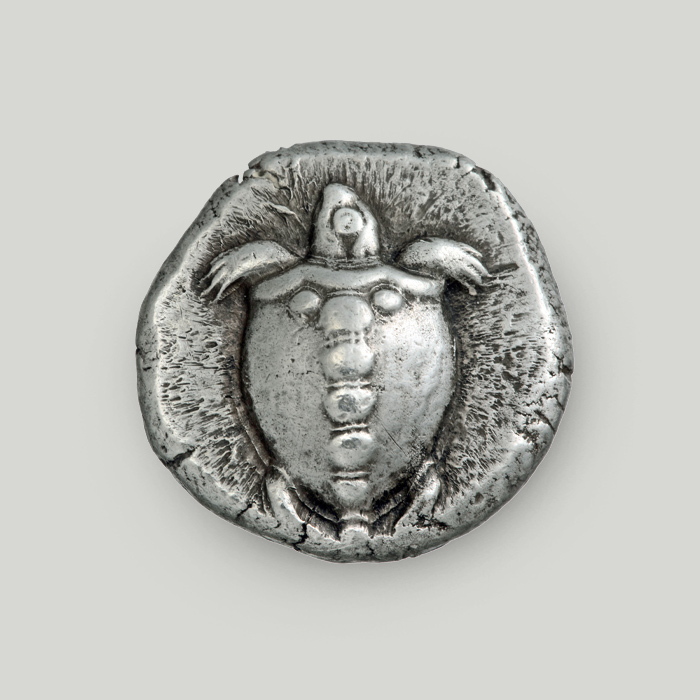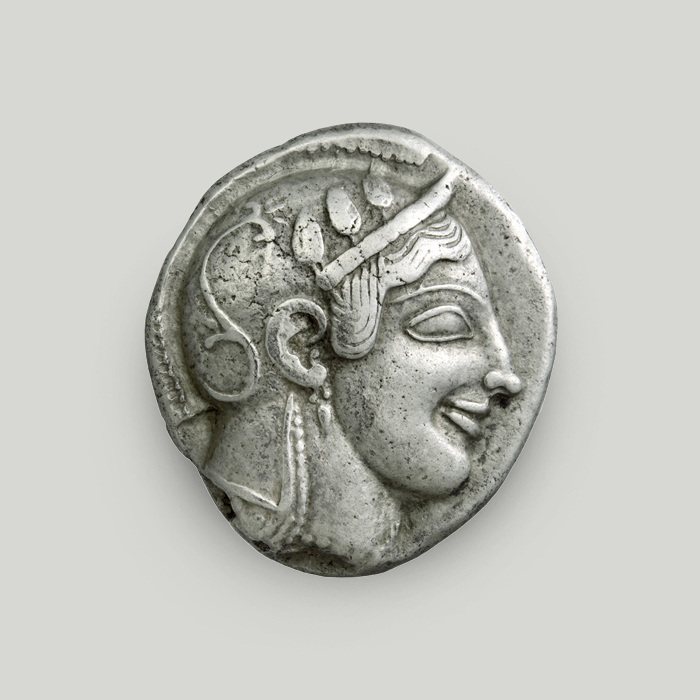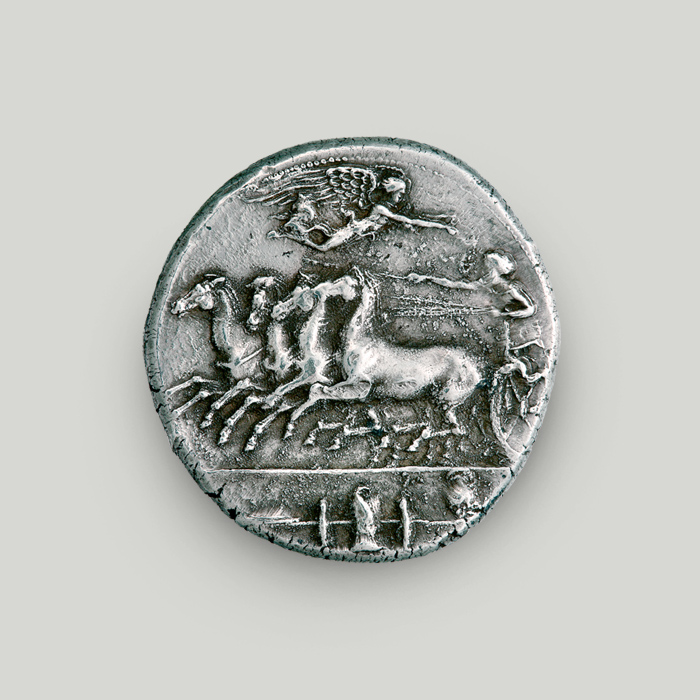Electrum hecte (1/6 stater), Ionia/Lydia
The electrum hecte is the first coin-shaped currency. It appeared in the late 7th century BCE in the region of Ionia/Lydia in western Asia Minor. The first pieces were made of electrum, a natural alloy of gold and silver, and had no type on the obverse. In terms of weight, the hecte was a fraction equal to 1/6 stater.
Obverse
The coin is blank, with no type on the obverse.
Reverse
An irregularly shaped impression, often called an incuse square, is struck on the reverse.
The face of money
Even though currency has changed many faces in the course of history, coins still remain the timeless symbol of money. Simply put, a coin is a small metal disc signed by the issuing authority to provide identification and warrant credit.
Coin-shaped currency appeared in the late 7th century BCE in western Asia Minor, then under the rule of the kingdom of Lydia.
Herodotus credits the invention of coinage to the Lydians (I, 94): “[The Lydians] were the first men whom we know to have minted and used gold and silver coins.”
According to modern research, though, coins appeared around the same time in Lydia and Ionia.
No-type coins
The first coins were blank. The obverse had no type struck on it.
On the reverse, there was only a punch mark shaped like an incuse square. This mark meant that the coin had been weighed and punched before it could be put into circulation.
Electrum, a.k.a. “white gold”
Electrum was the first ever material to be used in minting, as this metal occurred in large deposits in western Asia Minor, mainly at Mt. Tmolus and around the Pactolus River.
It is a naturally occurring alloy containing approximately 70% gold and 30% silver. Because of its colour, Herodotus (Ι, 50.2) called electrum “white gold”.
From natural to man-made alloy
Metal analysis run on the coins showed that, before long, man-made electrum alloy started being used instead of the natural one. The man-made version was not as rich in gold. A small amount of copper was also added to achieve the desired colour.
Electrum coins were issued until the 4th century BCE by some cities in Asia Minor. Most authorities, however, had adopted silver coinage by that time.
Staters in antiquity
The word “stater” corresponds to an ancient coin denomination. Etymologically, it is derived from the Phoenician schequel, which denoted a coin weighed to comply with a specific standard.
The weight of a stater varied significantly by region, and according to the weight standard applied by the mint.
Pactolus means money
Pactolus (present-day Sart Çayı) is a river in Asia Minor. Its water flowed with gold and electrum, the natural alloy used to mint the first-ever coins.
In Greek, its name is still synonymous with affluence and never-ending sources of wealth.
The dating of the first coins
Theories on the dating of the first coins were based on the coins unearthed during the excavations carried out by the British Museum at the site of the temple of Artemis in Ephesus in 1904-1905.
The hoard consisted of 93 electrum coins from cities in Lydia and Greek cities along the coast of Asia Minor.
The coin in our publications
The Ionian/Lydian electrum hecte is mentioned in the book Coins in the Ancient Greek World by Dr Dimitra Tsangari. This publication follows the history of coins from their invention to the end of the Hellenistic period (2nd century CE). It also includes photos of 38 coins from the Alpha Bank Numismatic Collection. The publication is bilingual (English/Greek).
Buy the publication Coins in the Ancient Greek World on the Alpha Bank e-shop.
The Alpha Bank Numismatic Collection is not open to the public.
Research visits to the Numismatic Collection can be organised upon request.
Contact us to book your visit.








